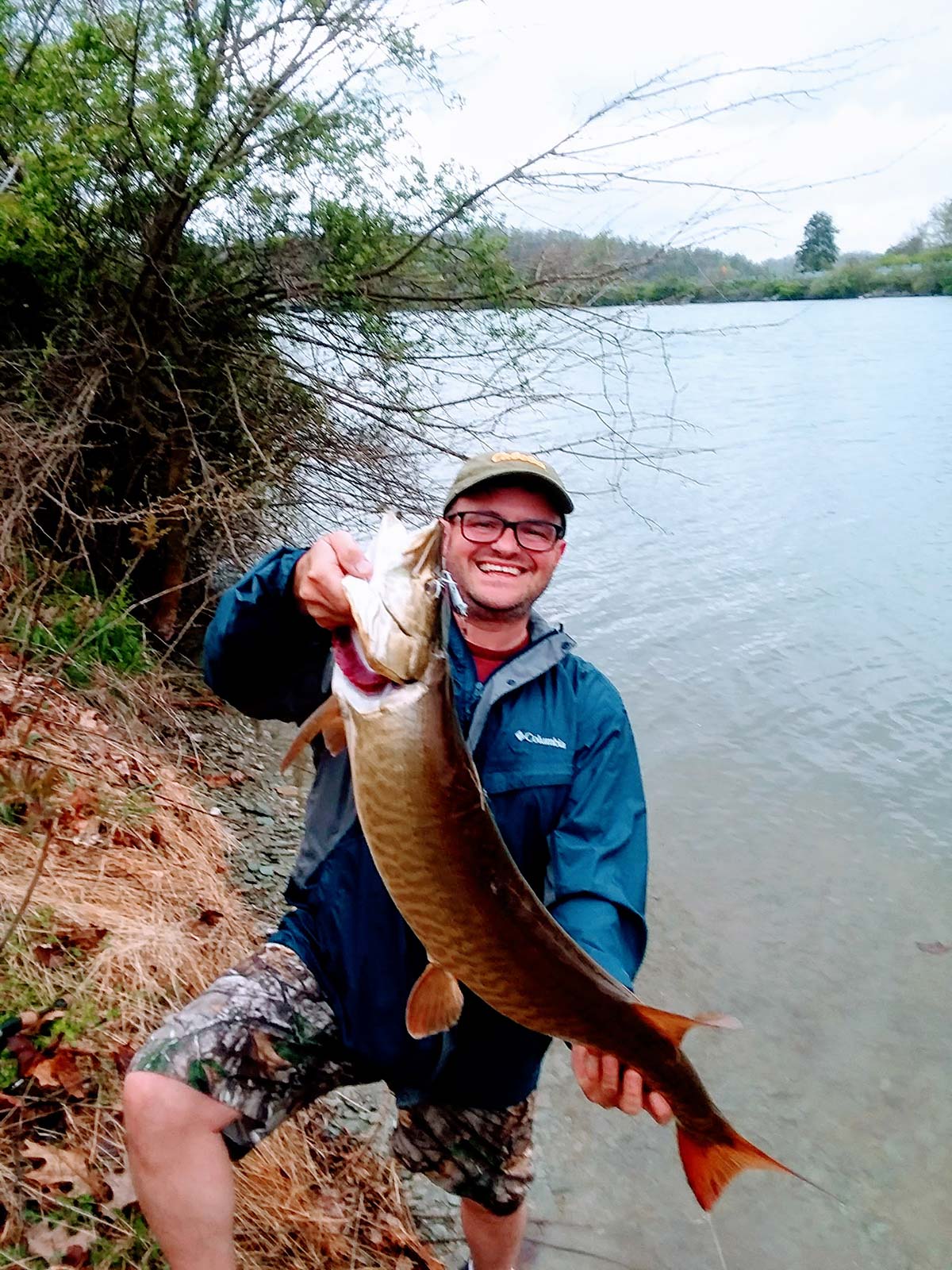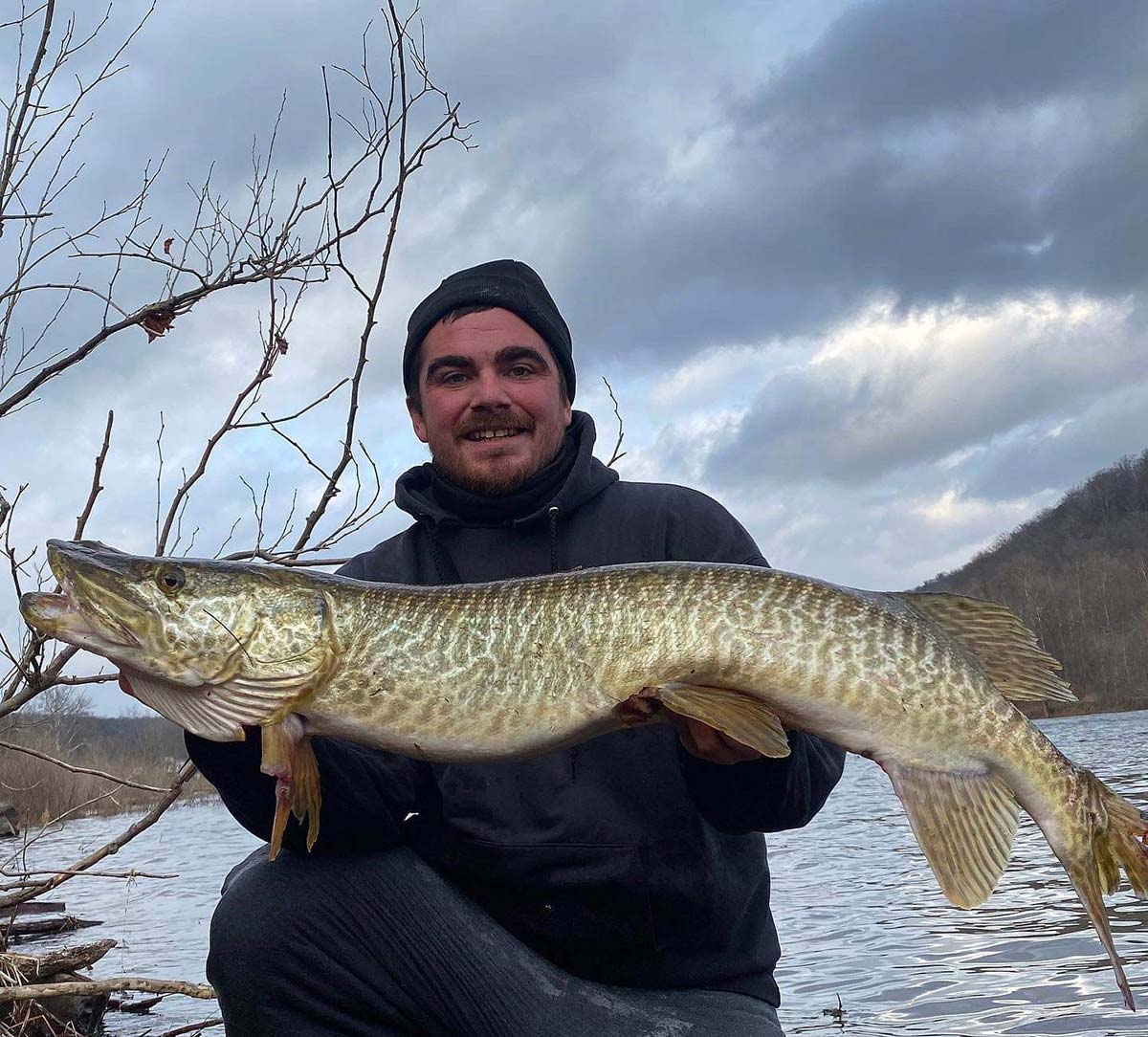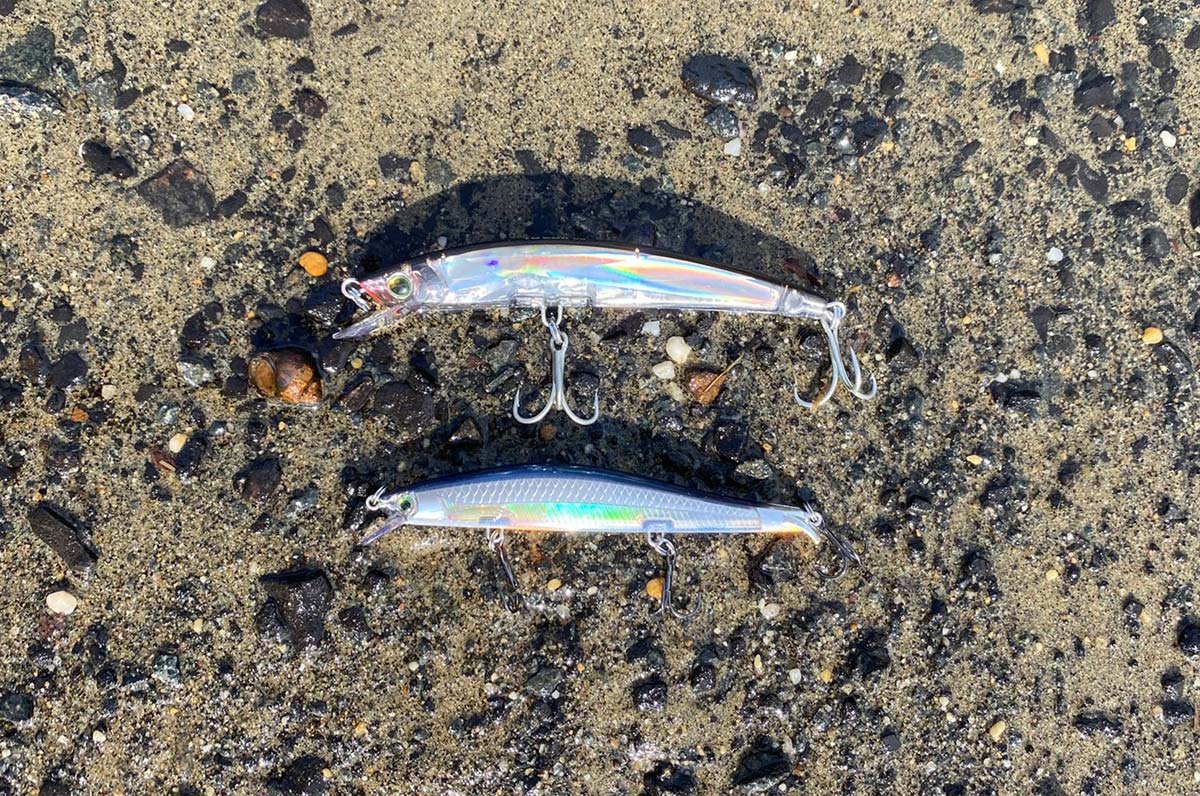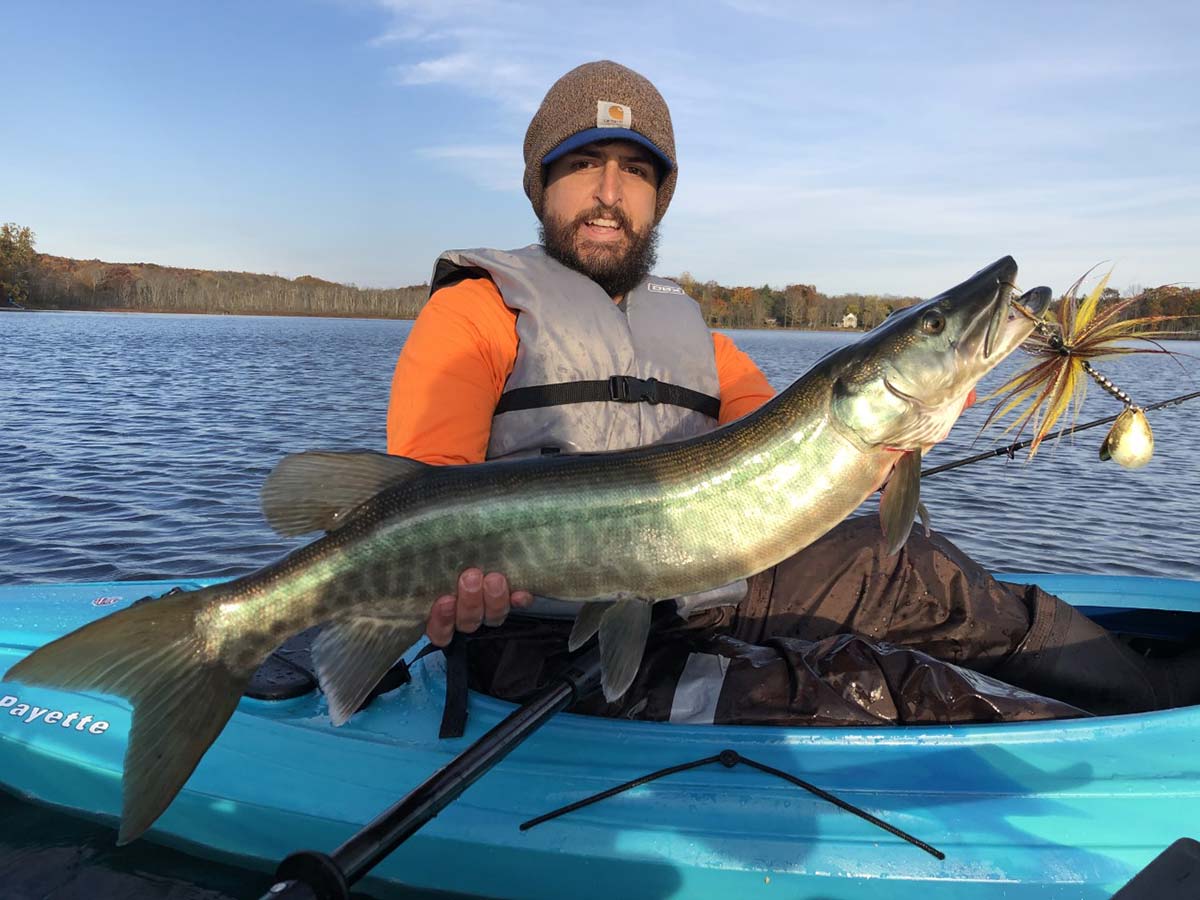
It’s muskie time in the Garden State!
Catching a trophy muskellunge – or muskie – is one of the greatest thrills that can be experienced by any freshwater angler. In many waters, 30- to 40-inch specimens are common. In New Jersey, the state record was caught by Bob Neals at Monksville Reservoir in January, 1997, and weighed in at 42 pounds, 13 ounces.
In terms of pursuing muskies in New Jersey, opportunities abound. In-state destinations include the Delaware River, Greenwood Lake, Monksville Reservoir, Echo Lake Reservoir, Lake Hopatcong, Mercer Lake and Mountain Lake. Of course, neighboring states like New York and Pennsylvania also host excellent muskie fisheries.
Muskies are often referred to as “the fish of a thousand casts.” This is not true by a long shot; don’t believe it. Their springtime habits (April-May) are very predictable, and the key to successfully targeting the muskie lies in understanding the variables that are in play when we pursue them.
There are a specific set of conditions that work in our favor and increase our odds of connecting with one of these freshwater freight trains. Learn those variables and look for conditions when as many of them are in play at the same time and you can score with far less than a thousand casts.

Making Magic
Spring muskie will seek out shallow water coves that are protected from the wind. They will stage in these areas during their pre-spawn and spawning cycles. No matter how large the body of water that you are fishing, 90% of the fish will occupy depths of approximately 1 to 3 feet in these coves. A cove that receives daytime sunshine is even better as this will increase the water temperature.
Depending on the depth, the distance from shoreline for casts will vary greatly. If you are fishing a body of water where depth drops off sharply, then the target zone might only be 20 or 30 feet from the shoreline. On the other hand, if you can identify shallow water flats, especially those that are wind protected, you may be able to stay in the zone for hundreds of feet from the shoreline. Making casts parallel to the shoreline when possible can be the most productive. Start out by casting into a depth of a foot or so and keep casting parallel to the shoreline until reaching a depth of 3 feet. Then move to a fresh piece of shoreline and repeat. Once you have made the same cast twice, focus on casting to new pieces of water.
Keep in mind that fishing when multiple variable conditions are in play is much more important than the amount of time you put in, or how many casts you make. Where you fish is one of the very most important variables. A muskie will gladly spend time in a sheltered bay all day long as the sun warms the water; but that same fish might watch your lure during full daylight and never take a swipe. Yet this all can change during the magic time beginning at sunset and continuing until last light.
The importance of timing can’t be overstated – Think shad fishing, catfishing, or even targeting dawn and dusk stripers – all are extremely dependent upon light levels and hitting the correct time windows. The same can be true for muskies; focus on that magic time.

Timing & Tackle
Muskies typically become more active during overcast conditions. Two things occur when it’s overcast. First of all, that magic time can become even more so. Overall activity increases and with it the chance of getting a strike increase. As a rule, the most productive time is between sunset and dark, although on overcast days, fish might become more active even earlier.
A slight uptick in water temperature may also help to turn muskellunge on to striking. Sunny days help to increase water temperatures but fish don’t typically like to strike until sunset or after. However, a warm rain will raise water temperature nicely and often increase fish activity. Concentrate your efforts during the warm spring rain – it’s a great time to target active muskies.
A medium to heavy spinning or bait casting outfit with a 7-foot or so rod and 20-pound braid will do the trick. For a real adventure, try the fly rod! Outfits at 7 weight for the adventurous and 9 weight or above for the sane will do the trick. In either case, be sure to keep your drag nice and loose, and if you do hook up don’t muscle the fish. These fish are beastly strong so take your time and enjoy the fight.

Lure Selection & Retrieve
Remember that you will be targeting these fish in shallower depths, so flashy, bright lures that attract attention are your best bet. Muskies are notorious for following baits right up to your rod tip so be ready for a strike at any time from when your lure hits the water until when the retrieve is complete.
I believe that a wire leader is a must and shouldn’t impede the action of your lures; these fish are typically not leader shy either. Try a 6-inch black wire leader attached via a barrel swivel (20 pounds or greater) on the terminal end of your rig. Don’t be afraid to maneuver your lure in a figure eight pattern a couple of times at the very end of the retrieve, keeping your rod tip in the water.
While many lures will do the trick, there are a few “go to” patterns that are the most consistently effective. Stick baits by the likes of Rapala or Yo-Zuri are a good choice. Cast shallow diving stick baits between 4 and 8 inches long, with natural baitfish colors such as silver/gray variations to match the hatch of local forage. Switch things up by also using chartreuse and white variations, both straight and jointed versions. Retrieve very slowly with frequent jerks of the rod tip, completely pausing the retrieve from time to time,
Spoons between 4 and 6 inches long will also do the trick. Retrieve these steadily and as slowly as possible while still maintaining the side to side action of the lure. Classic red and white is very productive although many other color variations will work as well, again with an eye on matching the hatch. Same with soft plastics, like Senko worms, flukes, and other random creature patterns between 4 and 8 inches, rigged Texas style with a 1/0 Gamakatsu hook. Offset shank, extra wide gap, or hybrid style hooks will work equally well. Work back slowly with lots of soft twitches. Stop the retrieve all together two or three times during each retrieve.
| FLY ROD TROPHIES |
| When targeting muskies on the fly, either a floating or slow sinking line will work, with a tapered 6- or so foot leader and 6-inch wire leader on the terminal end. A wire leader with a clip on the terminal end will provide the fly with additional action. Fly lengths should vary between 3 and 6 inches. A deceiver streamer pattern works well while a weighted Clouser minnow can provide additional depth penetration. Two tone colors such as yellow/red and chartreuse/white are hard to beat. Strip the fly in with a constant and erratic retrieve. Stop every now and then. Also try an extremely slow retrieve from time to time. |
Inline spinners like the traditional gold and silver Mepps Aglia Spinners 3 inches in length or greater will also work well. Reel them in as slowly as possible while still keeping the blades spinning. All of this flashy bling can be too much for a Muskie to resist so be ready for a long follow and a strike close to your rod tip at the very end of the retrieve.
Chasing trophy muskie in the spring is totally within reach, especially given most of us already own much of the equipment that is needed. It seems counterintuitive but your lure selection is much less important than all of the other variables involved. Fish when as many of the desirable variables are present at the same time. The experience I had catching my first muskie is a case in point. That 40-plus inch fish was caught in a wind sheltered cove, during a warm rain, in one foot of water, after sunset, casting parallel to the shoreline from a finger dock. On that special day, many key variables were in alignment.




